If you’re feeling inspired to experiment with ginger after last month’s post, I’ve got just the recipes for you—-a simple, DIY warming massage oil and salve for aches, pains, sore muscles and joints, arthritis, nerve pain and menstrual cramps.
This page may contain affiliate links, which means if you purchase through my links I get a small commission, but it doesn’t cost you anything extra. Thank you for supporting my blog!
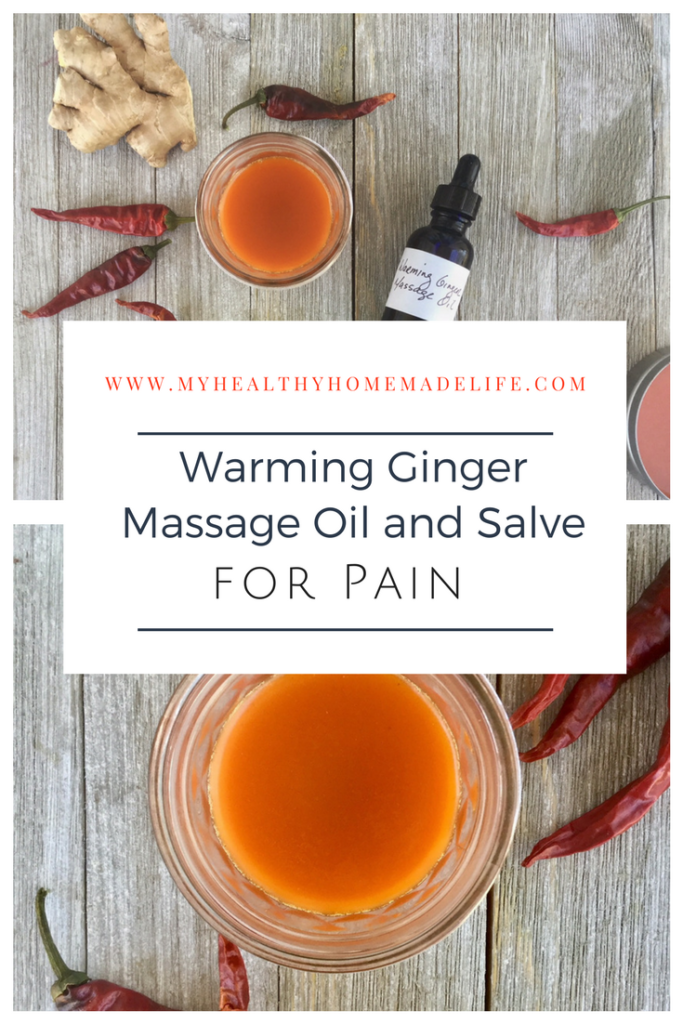
Ten years ago, I never would have dreamed I’d be making my own home remedies and salves (and certainly not ones containing ginger and cayenne!) but here I am! (If you’re new to the blog and haven’t read how I ended up exactly where I am, head on over to my About Me page to hear my story. It’s a doozy!)
Today on the blog, I’ve got two pain-relieving recipes for you containing herbs that you most likely already have in your pantry–ginger and cayenne. Both the massage oil and salve can help relieve inflammatory pain, sore muscles and joints, arthritis and nerve pain, as well as other aches and pains.
Let’s take a look at the key herbs in these recipes and how they work.
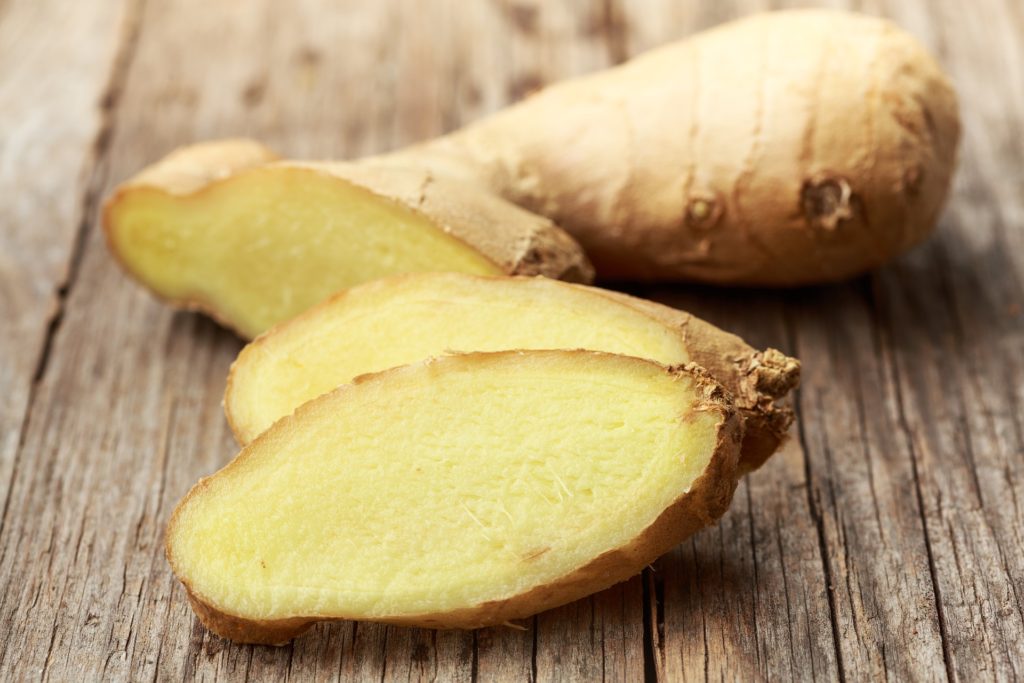
Using Ginger for Pain
As I mentioned last month, ginger is a pretty amazing herb that is useful for much more than just nausea. Ginger can be extremely beneficial for inflammatory pain and stiffness. It works by reducing inflammation (and therefore reducing the pain caused by inflammation) and by moving the blood. It’s warming and diffusive, spreading its medicine throughout the body.
When used both topically and taken internally, ginger has been shown to reduce the pain and stiffness of osteoarthritis and rheumatoid arthritis. It can also relieve muscle pain from over-worked muscles.
For more on using ginger as a home remedy, check out this post.
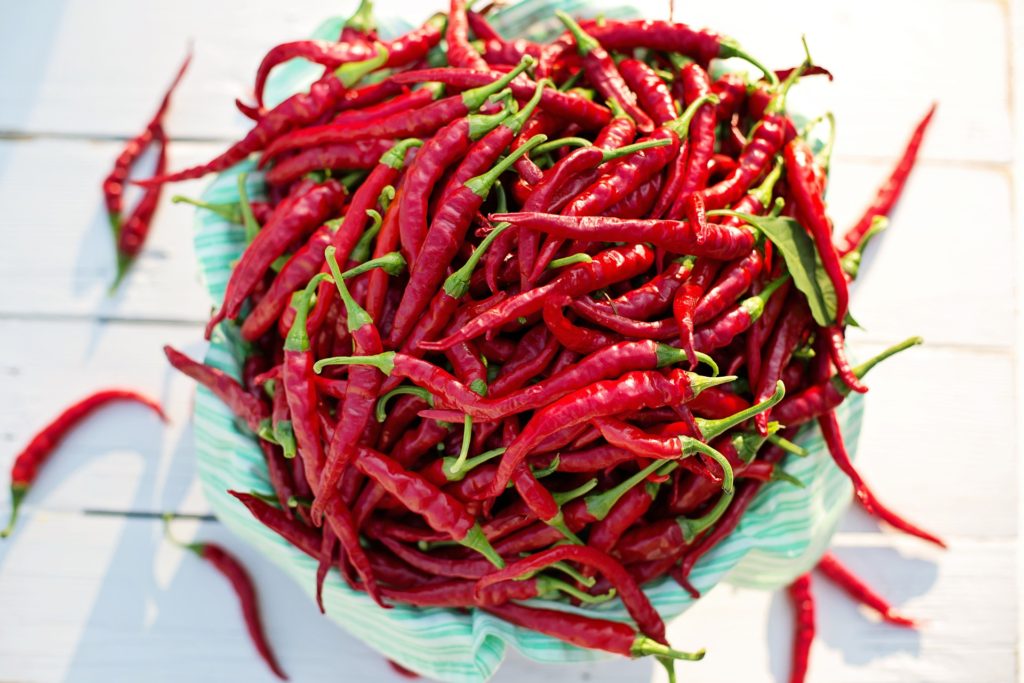
Using Cayenne for Pain
Like ginger, cayenne is blood-moving and warming. Cayenne also contains an ingredient know as Capsaicin which can block pain sensations in the body. When used topically, it can relieve pain from arthritis, diabetic neuropathy, backaches, menstrual cramps and other aches and pains.
The first time I made a cayenne salve, I “ever so cautiously” dipped in my finger and lightly applied it to my sore back. I expected it to be hot on my skin and I was trying to be careful. Much to my surprise, it wasn’t hot at all! In fact, it didn’t feel anything like some of the over-the-counter ointments I’d used over the years. It was much more subtle. A lot of herbs are like that. I mention this because like me, you might be worried at first about adding cayenne to your salve because of the heat factor. Unless you have very sensitive or thin skin, you shouldn’t notice any burning sensation.
One word of caution: avoid touching your face and eyes after applying the massage oil or salve. It will burn if it gets in your eyes or on any sensitive areas.
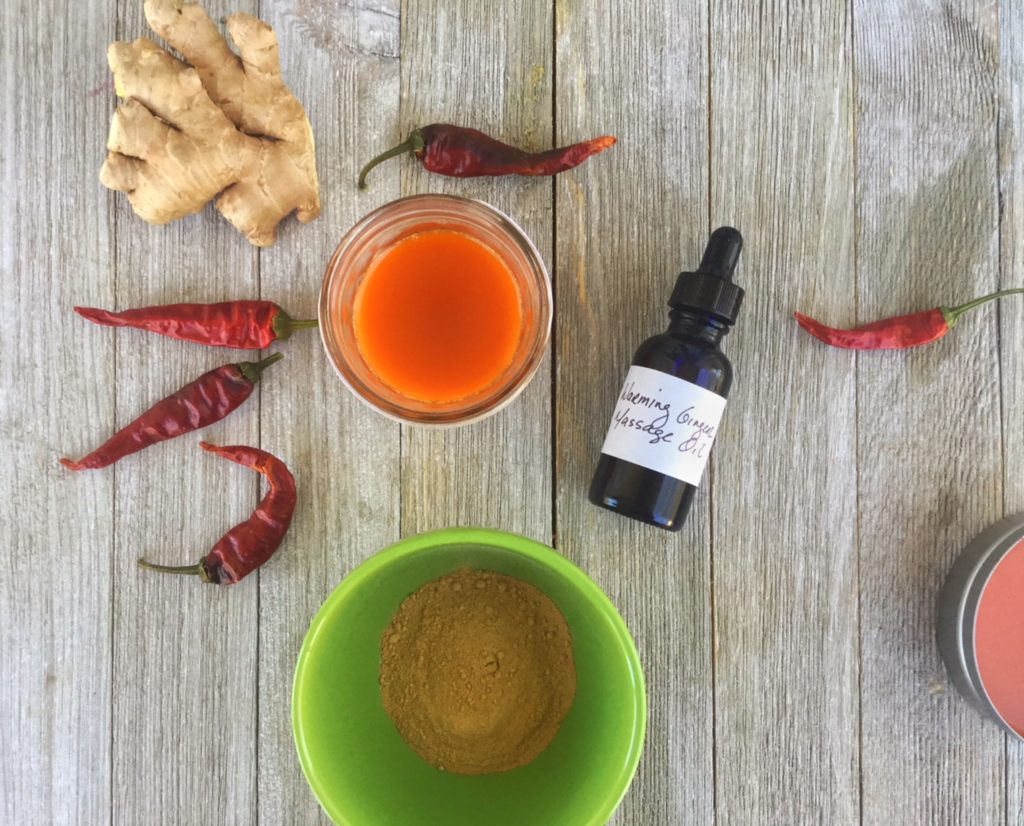
Warming Ginger Massage Oil & Salve Tips
For the most potent massage oil and salve, make sure your powdered herbs are as fresh as possible. Herbs that have been sitting in your pantry for a few years won’t have the zing that fresher herbs will have. One of my favorite places to purchase small amounts of dried herbs and spices is at my local co-op. These herbs usually have a high turnover rate so they are fresher than the jars you purchase in your supermarket and you can often buy small quantities. For more on co-ops and what you can buy there, click here.
Frankincense essential oil has so many wonderful properties, I love adding it to this massage oil and salve as it relaxes both the mind and the body. I use it in several of my home remedies and DIY recipes. If you don’t have any frankincense, you could substitute lavender essential oil.
For arthritis and other chronic pain, use the massage oil or salve daily. It might take a week or so to see results. For acute pain, apply as needed.
Storing your Massage Oil and Salve
For storing your massage oil, I love the pump bottles for massage oils (less mess!)
For the salve, I love the 2 oz tins for gift giving and the 3 oz tins or 4 oz tins for home use. In a pinch, the small glass jelly jars work great also!
Making your own labels can be fun too! I usually purchase Avery labels and use the free templates on their website to create personalized labels.
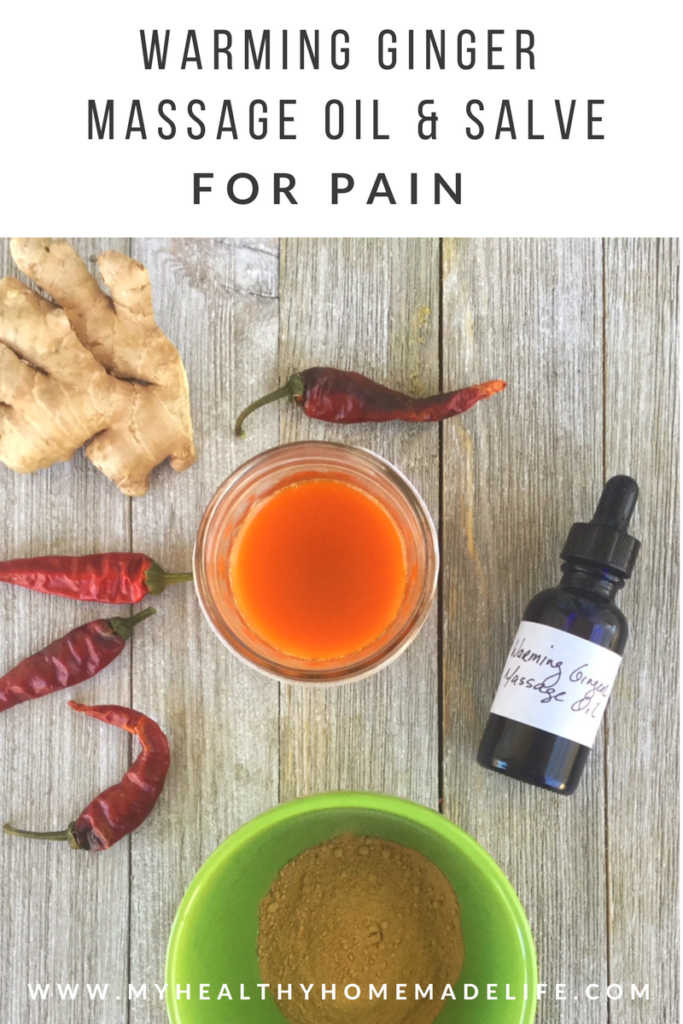
Warming Ginger Massage Oil & Salve for Pain
Jennifer Prentice @ My Healthy Homemade Life
A simple DIY warming massage lotion and salve for aches, pains, sore muscles and joints, arthritis, nerve pain and menstrual cramps.
Use daily or as needed.
5 based on 8 review(s)
Ingredients
- 1/2 cup sweet almond oil
- 1 tbsp cayenne powder
- 1 tbsp ginger powder
- 12 drops frankincense essential oil
- 1/2 oz (1/8 of a cup) beeswax pastilles or shaved beeswax
Instructions
- In a double boiler or a heat safe measuring cup or bowl placed in a pan of water, simmer the sweet almond oil and herbs over very low heat.
- Simmer gently for 30 to 60 minutes or longer, keeping the oil between 95-110 degrees. As Rosemary Gladstar likes to say, “the lower the heat and the longer the infusion, the better the oil.”
- Strain your oil using cheese cloth or muslin .
- For the Massage Oil: If making a massage oil, allow the oil to cool a bit, stir in the frankincense essential oil and transfer to a glass bottle ( a bottle with a pump works great for massage oils.) This recipe yields approximately 2 oz of massage oil.
- For the Salve: Wipe out any remaining herbs from your double boiler, then add your infused oil and beeswax. Heat your infused oil and beeswax over low-medium heat until the beeswax has melted. Add your essential oils and stir to combine. Immediately pour into prepared tins or small glass jars (I prefer the 2 oz tins for gift-giving and the 3 oz tins or 4 oz tins for home use.) Label and date your salve. This recipe yields approximately 4 oz of salve.
Notes
Avoid touching eyes and face with your hands after applying.
For arthritis and other chronic pain, use the massage oil or salve daily. It might take a week or so to see results.
Did you try this recipe? Please let me know by leaving a comment below or sharing a comment or picture on my Facebook Page or on Instagram .
References:
Encyclopedia of Herbal Medicine by Andrew Chevallier, FNIMH
Herb Mentor by Learning Herbs
This site is for educational purposes only. It does not provide medical advice. Information found on myhealthyhomemadelife.com is meant to motivate you to make your own health care and dietary decisions based upon your own research and in partnership with your health care provider.
Subscribe Here
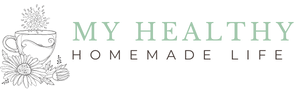


 Save Recipe
Save Recipe


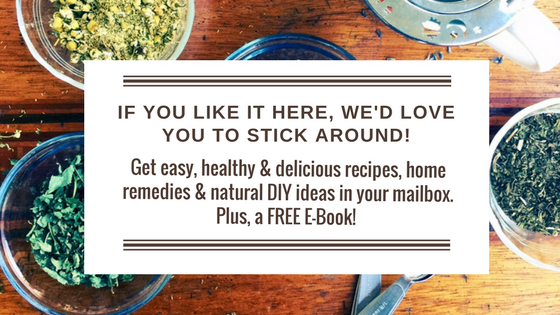
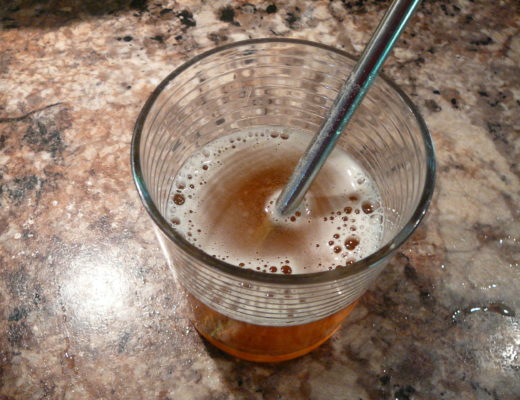
27 Comments